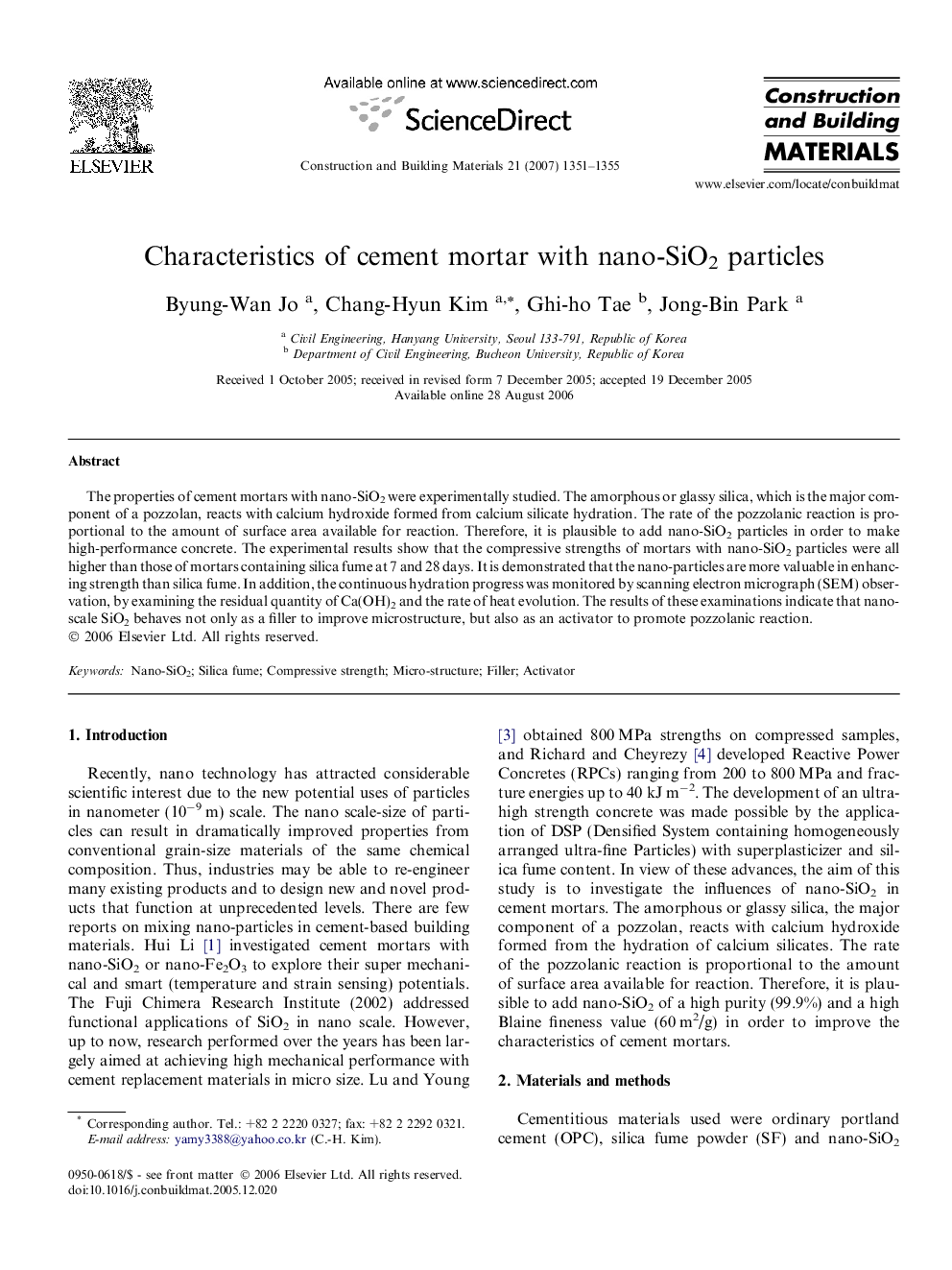| Article ID | Journal | Published Year | Pages | File Type |
|---|---|---|---|---|
| 261072 | Construction and Building Materials | 2007 | 5 Pages |
The properties of cement mortars with nano-SiO2 were experimentally studied. The amorphous or glassy silica, which is the major component of a pozzolan, reacts with calcium hydroxide formed from calcium silicate hydration. The rate of the pozzolanic reaction is proportional to the amount of surface area available for reaction. Therefore, it is plausible to add nano-SiO2 particles in order to make high-performance concrete. The experimental results show that the compressive strengths of mortars with nano-SiO2 particles were all higher than those of mortars containing silica fume at 7 and 28 days. It is demonstrated that the nano-particles are more valuable in enhancing strength than silica fume. In addition, the continuous hydration progress was monitored by scanning electron micrograph (SEM) observation, by examining the residual quantity of Ca(OH)2 and the rate of heat evolution. The results of these examinations indicate that nano-scale SiO2 behaves not only as a filler to improve microstructure, but also as an activator to promote pozzolanic reaction.
